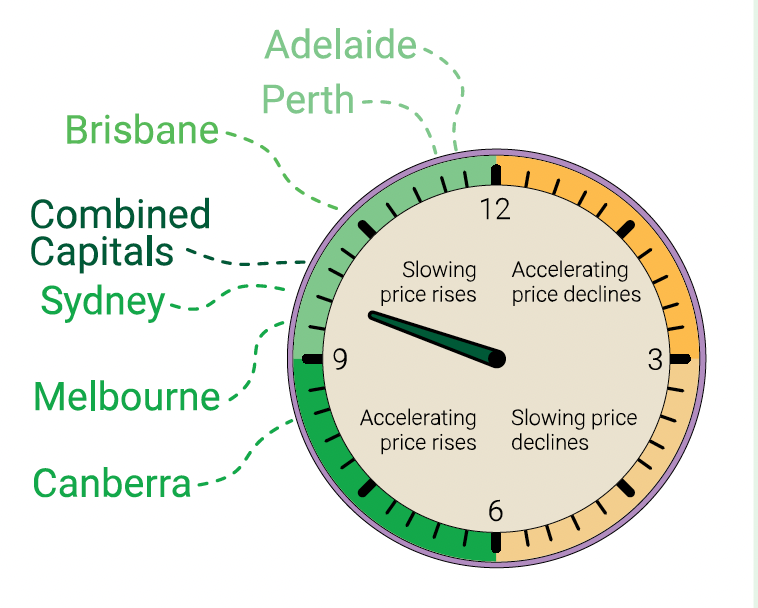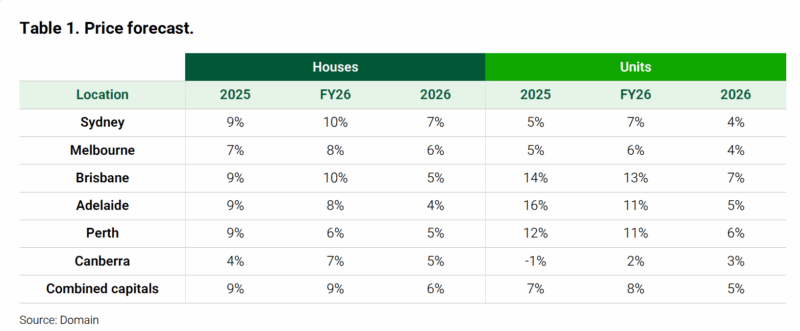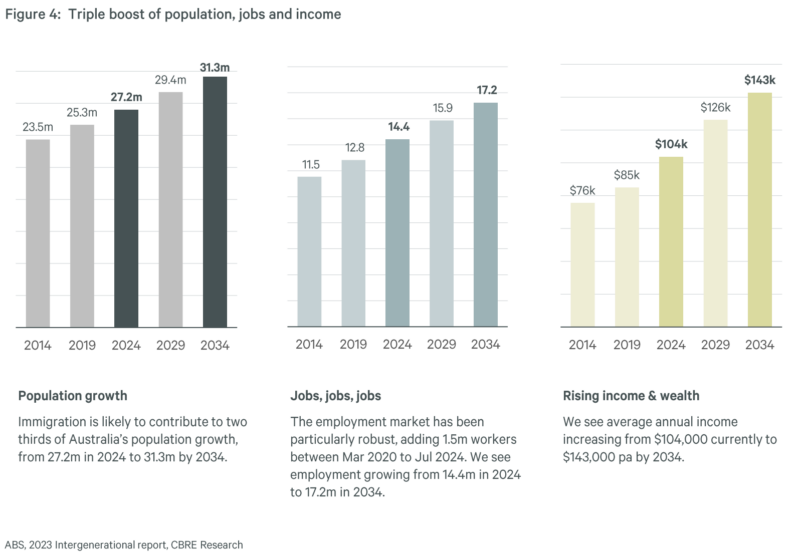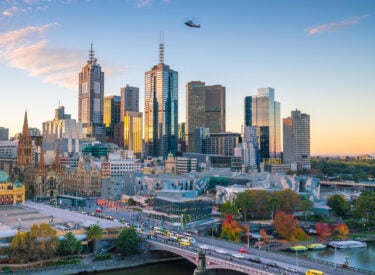
Key takeaways
2026 is shaping up to be another year of solid, though uneven, growth.
Interest rates are not expected to fall again, yet their stability, combined with strong population growth, a whole wave of new first-time buyers entering the market and affluent downsizers with significant equity in their properties at a time of ongoing supply shortages, will continue to support prices.
But this won’t be a uniform year; it is shaping up to be a year of two halves: a strong first half as pent-up demand flows through, followed by a slower second half as affordability constraints start to bite.
Population growth, tight rental markets, and chronic housing undersupply are key drivers of ongoing demand. At the same time investor activity is rebounding.
However, not all markets are equal — the gap between top-performing and underperforming suburbs is widening, making strategic property selection more critical than ever.
Long-term fundamentals remain strong — with the right plan, now could be an ideal window of opportunity to invest.
This article is updated monthly, so you always get the most current property data, forecasts, and expert insights.
Scroll down to explore detailed capital city forecasts, interest rate expectations, and expert commentary you won’t find in the mainstream media.

Note: But this won’t be a uniform year; it is shaping up to be a year of two halves: a strong first half as pent-up demand flows through, followed by a slower second half as affordability constraints start to bite.
However, I see this as the continuation of a property supercycle. Not a boom, but a period of prolonged property price growth.
But as always, the markets will remain fragmented, and I see 2026 as a year of two halves, as I explained below.
Cotality’s national Home Value Index rose another 1.0% in November, marking the third month in a row where Australian home values have increased by one per cent or more.
The headline growth figure was weighed down by Australia’s two largest cities, with Sydney values rising 0.5% in November and Melbourne values up 0.3%.
The latest PropTrack Home Price Index similarly reported that National home prices rose 0.5% in November pushing values to a new record. However, the pace of growth slowed compared to October.
Of course, each state is at its own stage of the property cycle and within each capital city there are multiple markets.
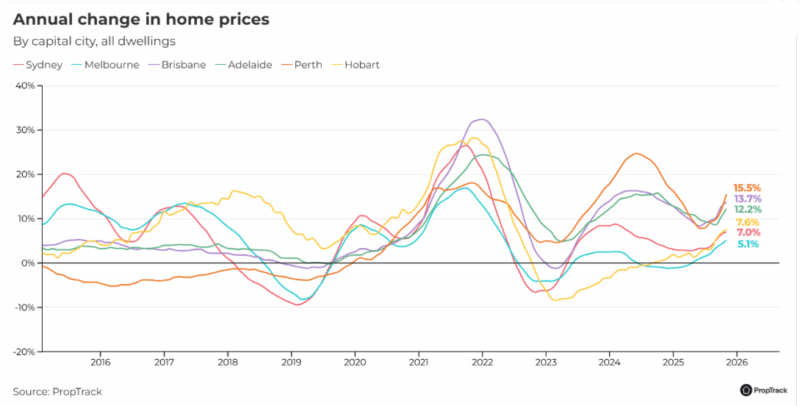
While regional property markets became popular with homebuyers wishing to escape Covid a couple of years ago, and more recently regional markets were attractive to investors because of their comparatively lower prices, over the long term capital city property markets have outpaced regional areas and this trend is likely to continue.

Overall, persistently low supply relative to demand are supporting housing values despite high interest rates, ongoing cost of living pressures, worsening affordability pressures and a deeply pessimistic level of consumer confidence.
The gap between capital city house and unit values has widened substantially.
Capital city house values rose almost 3 times as much as unit values since the onset of Covid ... but the gap is narrowing across most cities.
And after underperforming throughout the pandemic period, unit prices recorded stronger growth for much of 2025 as affordability constraints will mean more Australians trade backyards for balconies and courtyards this year.
The good news is that this creates a window of opportunity, as one can now buy established family friendly apartments considerably below replacement cost.
Here's my summary for 2026:

Note: But this won’t be a uniform year; it is shaping up to be a year of two halves: a strong first half as pent-up demand flows through, followed by a slower second half as affordability constraints start to bite.
- Population growth continues at historically high levels, with most new arrivals settling in Sydney, Melbourne, and Brisbane.
- New housing supply, however, remains severely constrained. Construction costs are elevated, labour shortages persist, builders remain under stress, and housing approvals are stuck near decade-low levels.
- Stability in interest rates will help buyers plan with greater confidence. Many will return to the market early in 2026, particularly upgraders, downsizers with substantial equity, rentvestors, and those assisted by the bank of mum and dad.
- Investor appetite is also likely to keep strengthening in the first half of the year as rents continue rising and yields firm.
- Government incentives will add further momentum. With first-home buyers now able to purchase with a 5 per cent deposit and a government guarantee, tens of thousands of additional buyers are expected to enter the market in 2026.
And the new Help To Buy Scheme will allow eligible Australians to buy a home with the federal government contributing up to 30% for existing homes and 40% for new builds.

Tip: The most desirable suburbs - the inner- and middle-ring, gentrifying, high-amenity, high-income areas - are positioned to outperform throughout the year.
-
Continued population and household formation
-
Growing national wealth, albeit unevenly distributed
-
Persistent under-supply in desirable suburbs
-
Investors who focus on scarcity, land value, gentrifying areas, and value-add potential will continue to outperform. As your report emphasises, success in this environment is less about timing the cycle and more about selecting the right property in the right location and holding for the long term.
Now let's look at this in more detail...
Here's the forecast for property prices in 2026
According to Domain.com.au record housing unit prices are expected across all capital cities by the end of 2026 but the year will be split into two clear phases
Phase 1: Momentum builds (January–June 2026)
Driven by:
- Expansive first-home buyer stimulus
- Lower interest rates beginning to fully flow through
- Rising household incomes
- Persistently tight housing supply
- Lower listings volumes
This phase sees stronger price growth and heightened buyer competition, especially in the affordable price brackets.
Phase 2: Affordability ceilings hit (July–December 2026)
By mid–2026, affordability once again becomes a handbrake. This is especially true in Adelaide, Brisbane and Perth, where several years of aggressive price growth have pushed borrowing capacity to its limits.
But even as growth moderates, it remains positive, just more subdued.
This two-speed dynamic will matter enormously for investors choosing between markets and asset classes.
Sydney is forecast to record the strongest house price growth, consistent with its tendency to lead the market in response to changes in interest rates.
Across the combined capitals, Domain expects house rent growth is to pick up in 2026, driven by Sydney, Melbourne and Canberra – reflecting rising household incomes and still-tight rental supply.
In most capital cities, growth in unit rents are expected to rise slightly faster than house rents, reflecting continued affordability pressures and stronger demand for smaller, more affordable dwellings.
Apartment rents set to surge over the next few years.
Median apartment rents are likely to grow by 24% between 2025 and 2030, across Australian capital cities, according to a recent report by International Property Consultancy, CBRE.
By 2030, 92% of 2-bed apartments are forecast to have rents exceeding $700/week (33% exceeding $1000/week)
CBRE expect that capital city vacancy rates will fall further to 1.1% by 2030 from 1.8% in 2025.
Over the next 10 years, demand for housing is expected to benefit from a triple boost: rising population (+4.1 million), rising jobs (+2.8 million), and rising income (+$39k).
CBRE estimates around $960 billion of additional income in the system to support mortgage, rent, and other living expenses.
You can always beat the averages.
While it’s likely that property price growth will continue to rise throughout 2026, the good news is that you can always beat it by investing in the right property in the right location.
Now by that, I don’t mean look for the next hotspot.
I mean buying quality properties in locations that will outperform in the long term such as gentrifying suburbs.
You see...property offers countless opportunities to improve your results through your own time, skills and knowledge – so you don’t need to settle for average.
And there’s more to it than just location. You can add value through refurbishment, or redevelopment.
What's ahead for interest rates?
It now seems likely that interest rates will be on hold for the first half of 2026 until inflation comes under control and remains well within the band of 2-3% that the RBA is hoping for.
Then it is possible we will receive one or two more interest rate cuts in the second half of 2026.
How can values continue rising amid high interest rates and the cost of living crisis?
Clearly affordability has decreased, but the housing markets are being underpinned by a number of factors:
- Wealthy buyers entering the market with higher deposits.
- Downsizers who had a lot of equity in their homes are buying debt free - in fact a third of properties last year were transacted with no mortgage at all.
- The bank of mum and dad and inheritances are helping many buyers with a deposit.
- The recent first home buyer incentives offered by both major political parties will increase demand at a time of lack of supply further pushing up prices, especially at the lower end of the market.
- Some buyers are buying in cheaper markets while others are buying units rather than houses.
- Rentvestors will keep buying investment properties while renting in their preferred living locations
The latest housing market stats
Here are the latest stats provided by CoreLogic for property price changes around Australia:
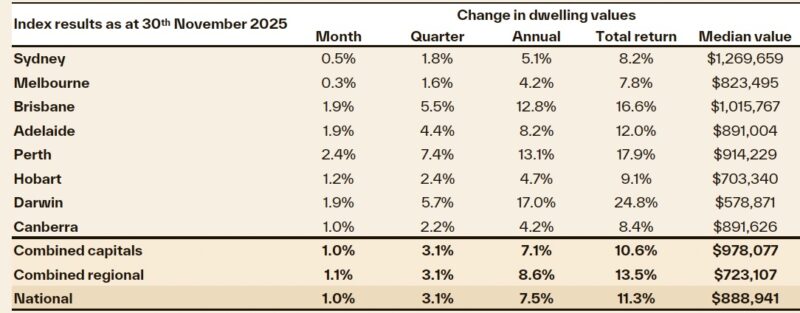
Screenshot
Source: Cotality HVI 1st December 2025.
We also keep track of “Asking Prices” as these are a good leading indicator for the property market because they reflect the sentiment of sellers and their expectations for the future value of their homes.
Sydney Property Asking Prices
| Property type | Price ($) | Weekly Change | Monthly Change % | Annual % change |
|---|---|---|---|---|
| All Houses | 2,140,696 | 7.204 | 1.4% | 9.7% |
| All Units | 883,036 | 3.764 | 0.2% | 6.4% |
| Combined | 1,627,298 | 5.627 | 1.1% | 8.7% |
Source: SQM Research, December 2025
Melbourne Property Asking Prices
| Property type | Price ($) | Weekly Change | Monthly Change % | Annual % change |
|---|---|---|---|---|
| All Houses | 1,323,371 | 9.938 | 1.0% | 6.7% |
| All Units | 660,136 | -0.136 | 0.0% | 7.8% |
| Combined | 1,113,409 | 6.685 | 0.8% | 6.8% |
Source: SQM Research, December 2025
Brisbane Property Asking Prices
| Property type | Price ($) | Weekly Change | Monthly Change % | Annual % change |
|---|---|---|---|---|
| All Houses | 1,371,211 | 0.942 | 1.3% | 14.6% |
| All Units | 839,511 | 5.289 | 3.4% | 25.2% |
| Combined | 1,237,133 | 1.958 | 1.7% | 16.2% |
Source: SQM Research, December 2025
Perth Property Asking Prices
| Property type | Price ($) | Weekly Change | Monthly Change % | Annual % change |
|---|---|---|---|---|
| All Houses | 1,182,013 | -2.613 | -0.7% | 8.2% |
| All Units | 707,295 | 5.192 | 1.0% | 19.0% |
| Combined | 1,057,437 | -0.602 | -0.4% | 9.9% |
Source: SQM Research, December 2025
Adelaide Property Asking Prices
| Property type | Price ($) | Weekly Change | Monthly Change % | Annual % change |
|---|---|---|---|---|
| All Houses | 1,113,594 | 14.106 | 2.8% | 15.8% |
| All Units | 592,806 | 0.174 | 1.3% | 21.6% |
| Combined | 1,019,822 | 11.587 | 2.6% | 16.3% |
Source: SQM Research, December 2025
Canberra Property Asking Prices
| Property type | Price ($) | Weekly Change | Monthly Change % | Annual % change |
|---|---|---|---|---|
| All Houses | 1,285,470 | -2.983 | -0.1% | 5.4% |
| All Units | 587,087 | 8.163 | 2.0% | 0.7% |
| Combined | 1,026,118 | 0.798 | 0.3% | 3.8% |
Source: SQM Research, December 2025
Darwin Property Asking Prices
| Property type | Price ($) | Weekly Change | Monthly Change % | Annual % change |
|---|---|---|---|---|
| All Houses | 786,984 | -2.994 | -0.7% | 12.3% |
| All Units | 455,024 | 0.851 | 2.2% | 17.4% |
| Combined | 656,448 | -1.484 | 0.1% | 13.6% |
Source: SQM Research, December 2025
Hobart Property Asking Prices
| Property type | Price ($) | Weekly Change | Monthly Change % | Annual % change |
|---|---|---|---|---|
| All Houses | 868,020 | 6.070 | 0.3% | 8.1% |
| All Units | 516,746 | 1.554 | 3.6% | 4.1% |
| Combined | 814,334 | 5.340 | 0.6% | 7.7% |
Source: SQM Research, December 2025
National Property Asking Prices
| Property type | Price ($) | Weekly Change | Monthly Change % | Annual % change |
|---|---|---|---|---|
| All Houses | 1,065,710 | 6.387 | 1.3% | 11.8% |
| All Units | 626,684 | -0.502 | 0.7% | 11.0% |
| Combined | 970,393 | 4.834 | 1.2% | 11.6% |
Source: SQM Research, December 2025
Capital Cities Property Asking Prices
| Property type | Price ($) | Weekly Change | Monthly Change % | Annual % change |
|---|---|---|---|---|
| All Houses | 1,551,103 | 11.760 | 0.9% | 9.6% |
| All Units | 777,257 | 5.373 | 0.4% | 9.8% |
| Combined | 1,319,711 | 9.705 | 0.8% | 9.5% |
Source: SQM Research, December 2025
The fundamentals of what drives Australian property prices
Property prices are driven by a combination of factors, and as we move through property cycles, they all come together to influence whether property values rise or fall.
If you take a telescopic view, rather than a microscopic view, and look at what's ahead for housing markets over the next decade or two, the two big factors driving our housing markets will be demographics (how many of us there are, have we want to live and where we want to live) and the wealth of the nation.
But first, let’s dig a bit deeper into the key underlying factors that will be influencing our property markets in the medium term.
1. Interest rates/affordability
While many people believe interest rates are a key driver of property values, and that's why there were so many pessimistic property forecasts as interest rates rose through 2022-23, our housing markets showed considerable resilience and kept rising in value despite the 13 interest rate rises the RBA threw at us.
Of course, falling interest rates and the subsequent increased affordability are strong drivers of property price growth, but the reverse isn't true.
House prices are driven by many other factors, not just interest rates, but rates are on the way down.
2. Supply and demand
Housing supply has a significant influence over house prices in the short term: an undersupply puts pressure on prices to rise while an oversupply does the opposite.
Despite very strong population growth, we’re just not building enough new dwellings, and this has put pressure on housing supply reflected in low rental vacancy rates and higher house prices.
At the same time, the strong absorption of new listings for sale has kept total listings in the market suppressed, intensifying competition between buyers.
These factors have created a sharp shortage of housing, outweighing the negative impact of rates on prices.
And there is no end in sight as building approvals (which are a good indication of future supply) are running at very low levels.
And just because a new apartment complex has been approved, it doesn't mean it will get built.
At the moment very few new complexes are coming out of the ground because it's not financially viable to build them at today's market prices.
Of course, this means future new developments will have to sell at prices considerably higher than today’s market value and this will, in turn, pull up the value of established apartments.
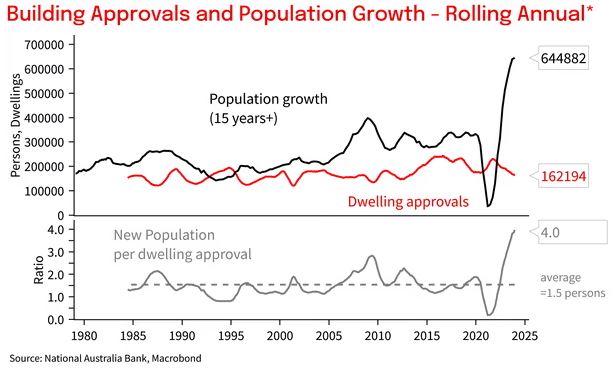
The surge in population growth to a record 660,000 last year, driven by record immigration levels meant that around an extra 250,000 new homes needed to be built last year alone.
But instead, completions have been running around 170,000 as the home building industry struggles to keep up with rising costs and material and labour shortages and as approvals to build new homes fell.
In fact it has been "conservatively" estimated that we have an accumulated housing shortage of around 200,000 dwelling currently, and it is unlikely our housing shortage will be resolved in the next decade, maybe we will have continue continuing pressure for rising house prices and rents.
3. Consumer confidence
Consumer confidence is a critical factor affecting the direction of property prices.
We don't make big financial decisions like moving home or buying an investment property unless we feel confident about our economic future and our financial stability.
Consumer confidence has been at historic lows because of all the economic and socio-political issues that have confronted us, but has picked up recently.
I believe that during 2025 consumer confidence will continue to rise as it becomes obvious that inflation is under control and interest rates will eventually fall.
At the same time, the “wealth effect” of an improving economy and rising property values will lead to further consumer confidence and bring home buyers and sellers back into the market.
4. Economic climate
Another key factor that affects the value of the property market is the overall health of the economy.
This is generally measured by economic indicators such as the gross domestic product (GDP), employment data, manufacturing activity, the prices of goods, etc.
While the RBA has been trying to slow our economy down to bring inflation under control, currently, everybody who wants a job can get a job and this will underpin our housing markets even if the economy falters a little moving forward.
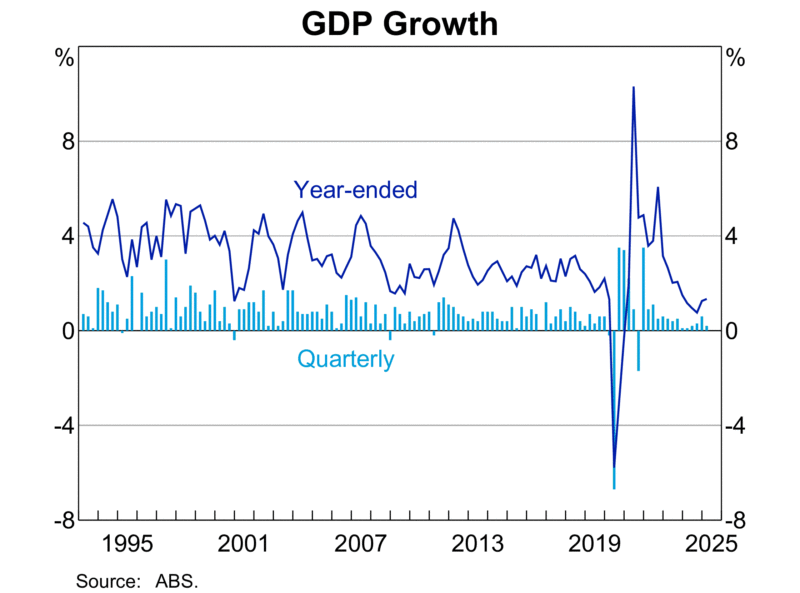
5. Population growth
In the year ending 30 June 2024, overseas migration contributed a net gain of 446,000 people to Australia's population.
This was a decrease from the record 536,000 people the previous year once the floodgates were opened as we worked our way out of the Covid Pandemic.
While population growth has always been a key driver supporting our property markets, the influx over the last few years has pushed our supply/demand balance off-kilter and is key to the increase in housing prices and the shortage of rental properties.
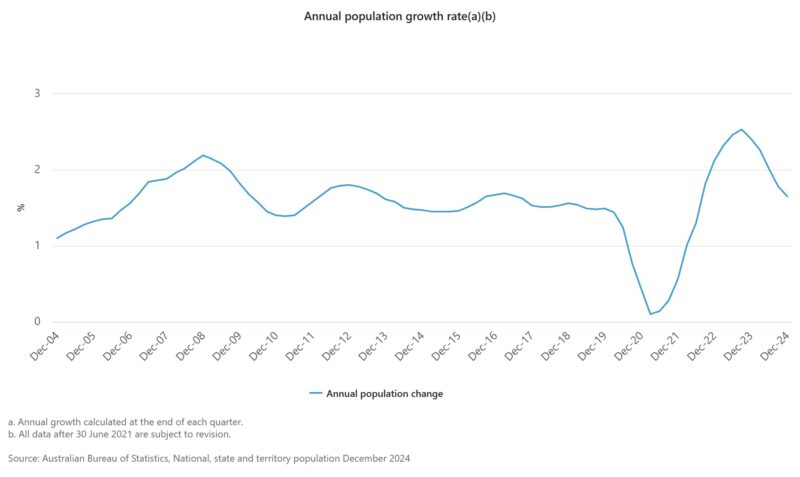
6. Availability of credit
When the credit (the ability to borrow from the banks) is readily accessible, with lower interest rates and less stringent lending criteria, it tends to stimulate the housing market since more people find themselves able to borrow money to buy homes, leading to increased demand for housing.
On the flip side, when credit is tightened through higher interest rates or stricter lending criteria (as happened when APRA made the banks tighten the purse strings in 2016-7), the effect can be a cooling of the housing market.
Such measures are usually a deliberate policy response to an overheated market, aiming to reduce the risk of a “property bubble” and subsequent crash.
7. Investor Sentiment
This sentiment, essentially the collective attitude and outlook of investors towards property markets, can significantly influence both the demand for and the value of real estate.
Investors generally account for around one-third of all property transactions so positive investor sentiment can drive up property prices, especially in sought-after areas.
Conversely, negative investor sentiment, as occurred during the market downturn of 2022, can lead to a decrease in property values.
If investors believe that property prices will stagnate or fall, they may be less inclined to invest, or they might choose to sell off their properties, increasing supply in the market.
8. Government incentives
Government incentives can have both direct and indirect impacts on the real estate sector.
One of the most direct ways government incentives affect property values is through policies aimed at stimulating demand.
For instance, initiatives like the First Home Owner Grant (FHOG) or stamp duty concessions for first-time buyers directly increase buying capacity, leading to greater demand for property.
Another aspect is the development incentives provided by the government to promote specific types of property development, such as high-density housing or urban renewal projects.
These incentives can increase property values in targeted areas by improving infrastructure, accessibility, and community facilities, making them more desirable places to live.
Tax policies and regulations also play a crucial role.
Negative gearing can increase demand for investment properties, pushing up prices.
And every time there is talk about removing negative gearing or amending taxes including land tax, investors shy away from our housing markets.
8 economic and property trends to watch out for moving forward
1. The upturn phase of the market will continue throughout 2026
Property price growth will continue throughout 2026, albeit at a lower rate and our housing markets will be fragmented as affordability will affect many homebuyers.
As mentioned above, it's likely 2026 will be divided into two halves, with stronger growth in the first half.
2. Interest rates will fall
Interest rates will fall again, but the question is when will the next rate cut come.
Interest rates are unlikely to fall again in the first half of 2026.
3. Our property market will be even more fragmented
Of course, there was really never "one" Sydney property market or one Melbourne property market.
There are markets within markets – there are houses, apartments, townhouses and villa units located in the outer suburbs, middle ring suburbs, inner suburbs and the CBD, and they're all behaving differently.
But our markets will be much more fragmented moving forward as some demographics struggle with cost-of-living, rent and mortgage cost increases (at a time of low wage growth) more than others.
It will either stop them from getting into the property markets or severely restrict their borrowing capacity which will negatively impact the lower end of the property markets.
Meanwhile, many first-home buyers who borrowed to their full capacity will have difficulty keeping up with their mortgage payments at the time of rising interest rates or when their fixed-rate loans convert to variable rates.
In other words, there will be little impetus for capital growth at the lower end of the property market.
That's why I would only invest in areas where the locals’ income is growing faster than the national average - such as gentrifying suburbs - as locals will have higher disposable incomes and be able to and are likely to be prepared to pay a premium to live in these locations.
Many of these locations are the inner and middle-ring suburbs of our capital cities which are gentrifying as these wealthier cohorts move in.
At the same time, I see well-located properties in our capital cities outperforming regional property markets.
4. Migration
Net overseas migration to Australia will remain strong in 2026, however, the Federal government will lower the rate of temporary migrants coming to Australia and is planning to reduce international student intake to Australia.
However, the influx of immigrants will keep driving rental growth as migrants tend to rent.
Only 38% of migrants own a home after being in Australia for five years, yet 71% of migrants own their home after 10 years.
5. Rents will keep rising
There is no end in sight for our rental crisis and rent prices will continue skyrocketing into 2026.
In fact, increased rental demand at a time of very low vacancy rates will see rentals continue to rise throughout the next few years.
6. Strategic investors will keep entering the property market
And they’ll squeeze out first-home buyers.
As rents continue to rise and the share of first-home buyers continues dropping, strategic investors with a realistic long-term focus will return to the market.
7. Neighbourhood will be more important than ever
In our post Covid world, people will pay a premium for the ability to work, live and play within a 20-minute drive, bike ride or walk from home.
Many inner suburbs of Australia’s capital cities and parts of their middle suburbs already meet the 20-minute neighbourhood tests, but very few outer suburbs do because there is a lower developmental density, less diversity in its community, and less access to public transport.
And ‘neighbourhood’ is important for property investors too, and here’s why.
In short, it’s all to do with capital growth, and we all know capital growth is critical for investment success, or just to create more stored wealth in the value of your home.
This is key because we know that 80% of a property’s performance is dependent on the location and its neighbourhood – in fact, some locations have even outperformed others by 50-100% over the past decade.
And it’s likely that moving forward, thanks to the current environment, people will place an even greater emphasis on neighbourhood and inner and middle-ring suburbs where more affluent occupants and tenants will be living.
These ‘liveable’ neighbourhoods with close amenities are where capital growth will outperform.
What sets these neighbourhoods apart is the demographics – these locations are generally gentrifying or are lifestyle locations and destination locations that aspirational and affluent people want to live in.
So lifestyle and destination suburbs where there is a wide range of amenities within a 20-minute walk or drive are likely to outperform in the future, fetching premium prices in 2024.
8. Our economy and employment will remain robust
Our economy will keep growing (albeit a little slower) and the unemployment rate will remain low thanks to the many new jobs created as our economy grows.
Long-term forecasts for Australian property markets (2025-2030)
Over the next decade, demand for housing is expected to benefit from the triple boost of rising population, rising jobs, and rising income.
Collectively this wealth effect will add around $860 billion of income over the next decade, a significant portion of which is likely could be directed towards housing.
The average Australian tend to spend 13% to 20% of their income and either rent or mortgage servicing.
Of course, no matter how many times you forecast property prices, it will always be difficult to predict exactly where property markets and prices will be in three months' time, let alone 6-7 years into the future.
After all, history shows us that some properties will outperform others by 50-100% in terms of capital growth, so strategic property investors who buy investment-grade properties could expect to see the value of their properties more than double within the next seven to 10 years.
So we always have to take forecasts for Australian property markets with a big pinch of salt.
But what I am confident we’ll see for our future property markets comes off the back of our strong projected population increase.
Currently, there are about 27.6 million Australians and Australia's population is forecast to rise to over 30 million people by 2030.
This means close to 3 million more people will need somewhere to live and this will underpin our property markets.
What we predict for Australia’s property market is that there will be many more high-rise towers of apartments, not just in the CBD but in our middle-ring suburbs.
In fact, we are already starting to see this, particularly in Melbourne and Sydney.
And we also expect there will be lots more medium-density housing – in particular townhouses will be a popular way to live with modern large accommodation on more compact blocks of land.
So what about property prices for 2025-2030?
Some economists predict a 40-50% growth in Australia's house prices between now and 2030.
This isn’t surprising because it’s often said that over the long term, the average annual growth rate for well-located capital city properties is about 7% (and we know that prices have risen 6.8% per annum over the past 30 years), which would mean, in general, well-located properties should double in value every 7-10 years.
That would put Australia’s median dwelling price at around $1.1 million in 2030.
Final Thoughts: So, Where to From Here?
I believe we’re in a window of opportunity for property investors who take a long-term view.
Right now, we’re seeing what some would call a “perfect storm” of fundamentals that are aligning to support strong property markets in the years ahead:
- Continued rapid population growth is putting pressure on housing.
- An acute undersupply of dwellings,
- A chronic shortage of skilled labour, making new development slower and more expensive.
- Inflation has moderated, now sitting within the RBA’s target range.
- Interest rates will fall again in the second half of 2026– bringing more buyers into the market.
- Government first homebuyer incentives are pouring fuel on the flames of our undersupplied housing market.
To be clear, I’m not suggesting anyone try to "time the market"—that’s near impossible to get right consistently.
However, many successful investors built significant wealth by buying during the early stages of an upturn, when fear still lingered and competition was low.
Looking ahead, demand will continue exceeding supply for the foreseeable future. Strong immigration, restrictive planning regulations, and the slow delivery of new housing stock will keep upward pressure on prices.
Meanwhile, the cost to deliver new dwellings is rising and will continue to rise.
It’s not just supply chain issues or labour shortages—it’s also financial viability. Developers won’t launch projects unless the numbers stack up, and right now, that means new stock will need to enter the market at significantly higher prices than existing homes.
So if you’re in a financially stable position and thinking of buying your next home or investment property—this may be your moment.
Because in property, like in life, you don’t get rewarded for waiting. You get rewarded for acting with clarity while others are uncertain.
Fact is, the smart money is already on the move.
But what about you? Are you clear on how to take advantage of these market conditions — or are you still waiting for "certainty"?

Tip: Need some clarity? Why not start with a complimentary Wealth Discovery Consultation with one of our Property Strategists? Leave us your details here.
That’s where our Complimentary Wealth Discovery Session comes in. We’re offering you a 1-on-1 chat with a Metropole Wealth Strategist to help you:
- Clarify your financial goals
- Understand how macro trends affect your position
- Build a personalised, data-driven property strategy
- Get ahead of the curve — before everyone else piles in
There’s no cost, no obligation — just practical, tailored guidance based on decades of experience.
Click here now to book your free Wealth Discovery Session
NoBookmark this page and check back regularly — we update this forecast often to reflect the latest insights and trends.
The property market never stands still, and neither should you.


